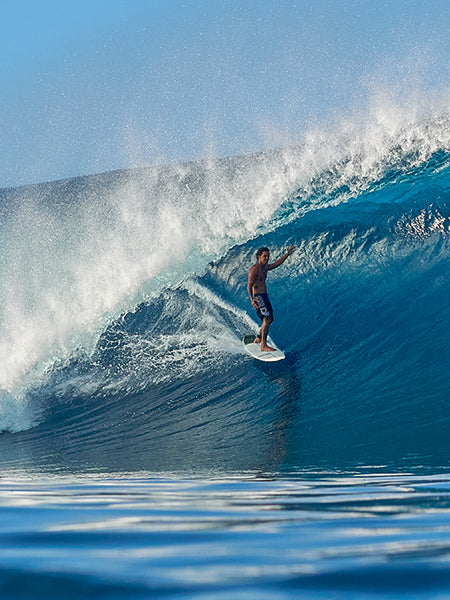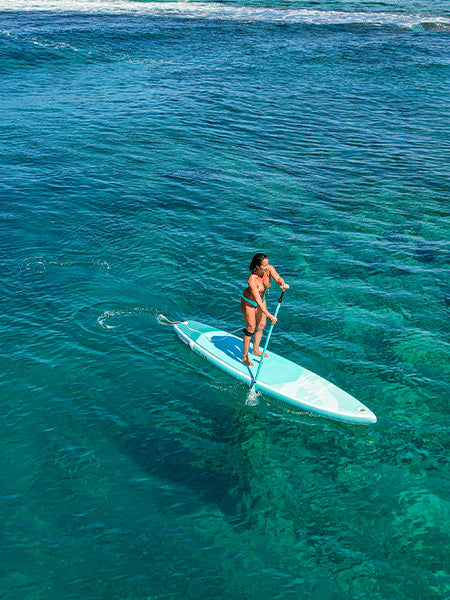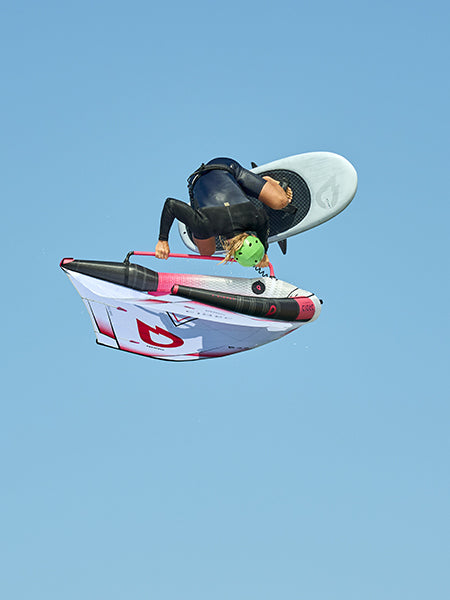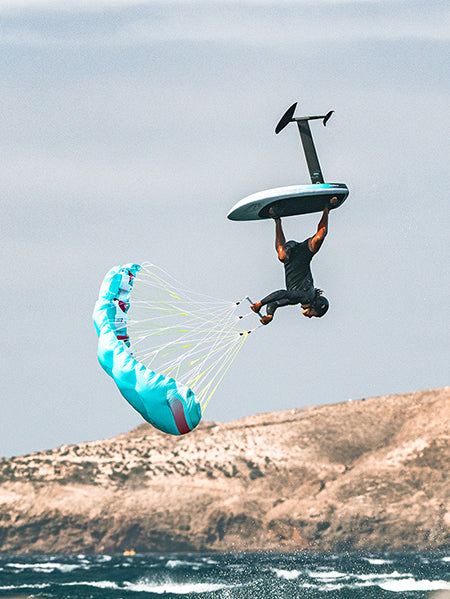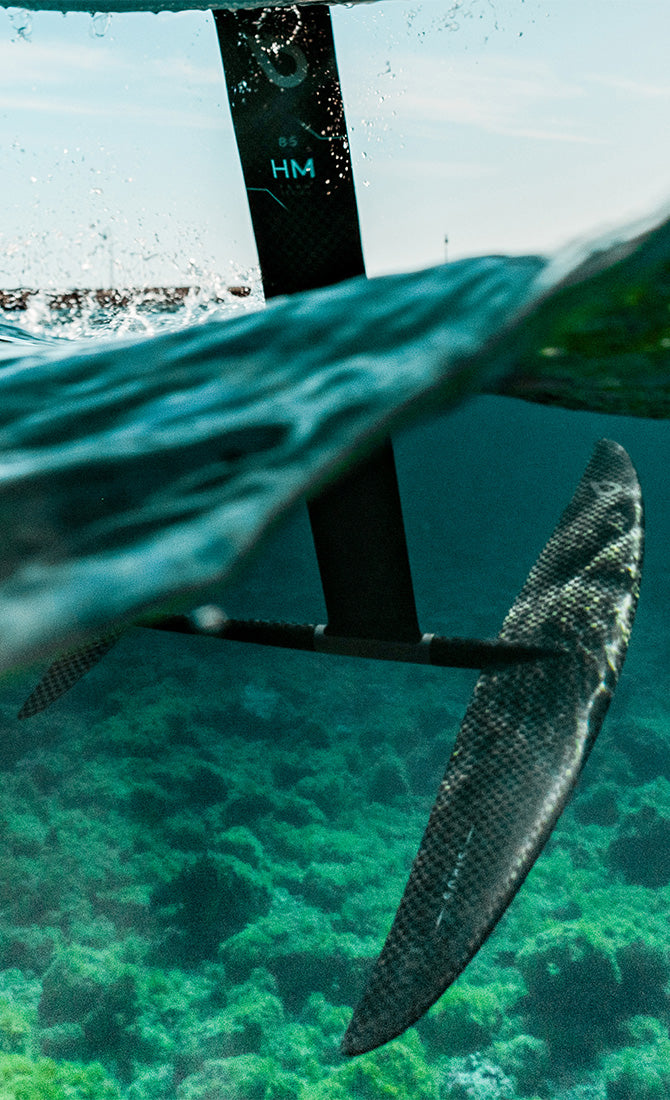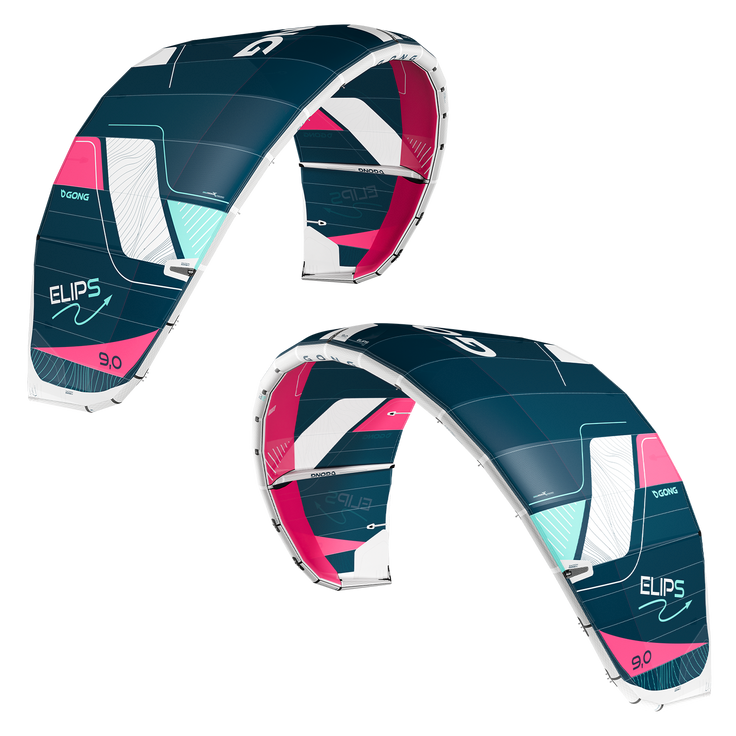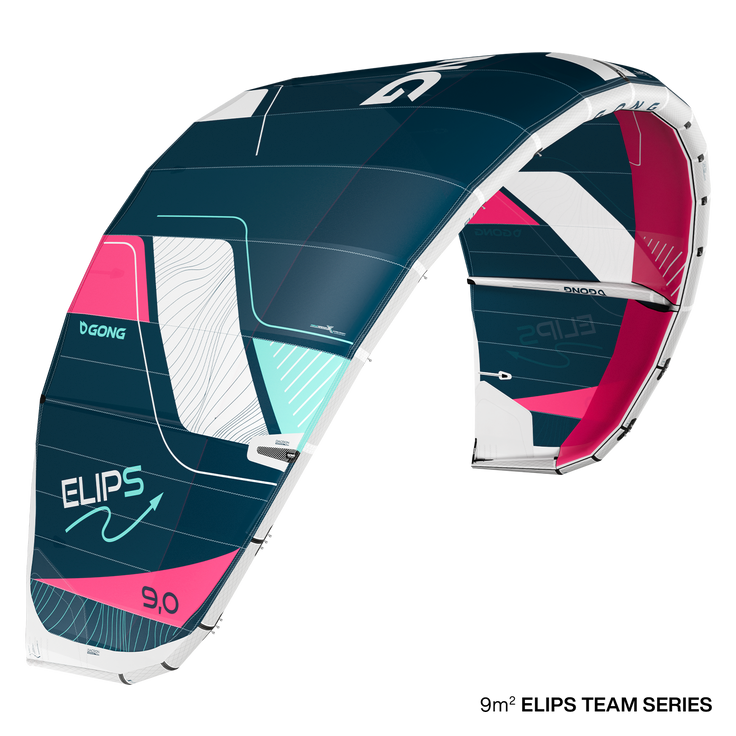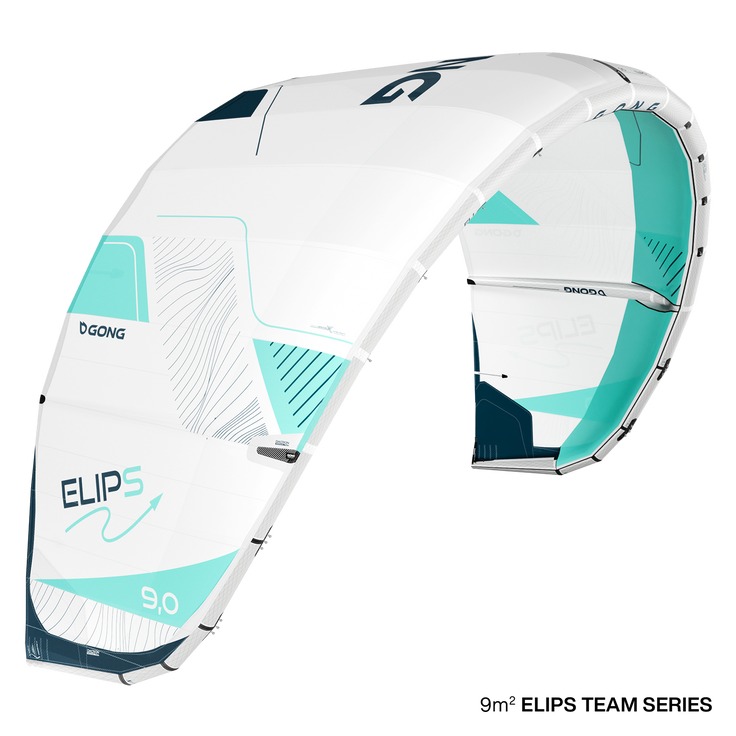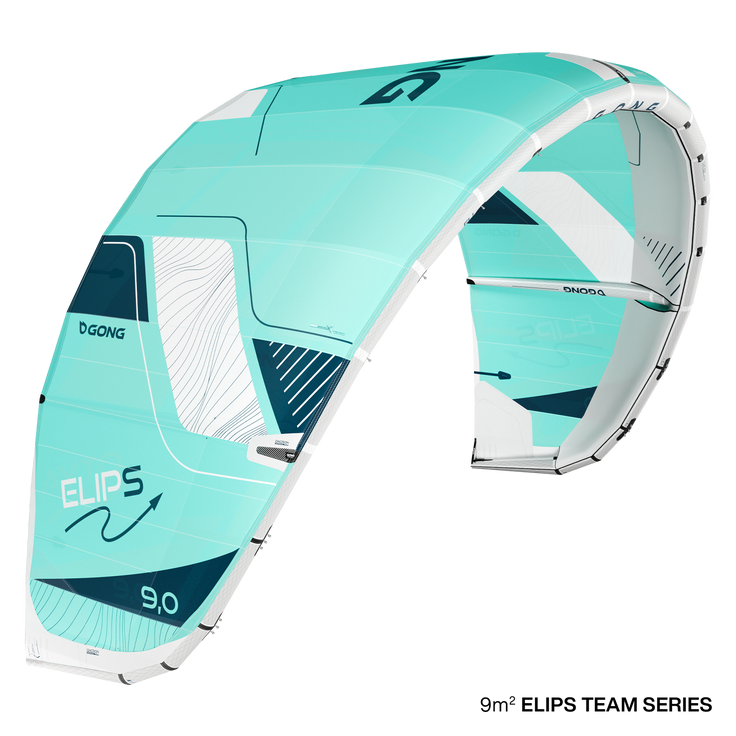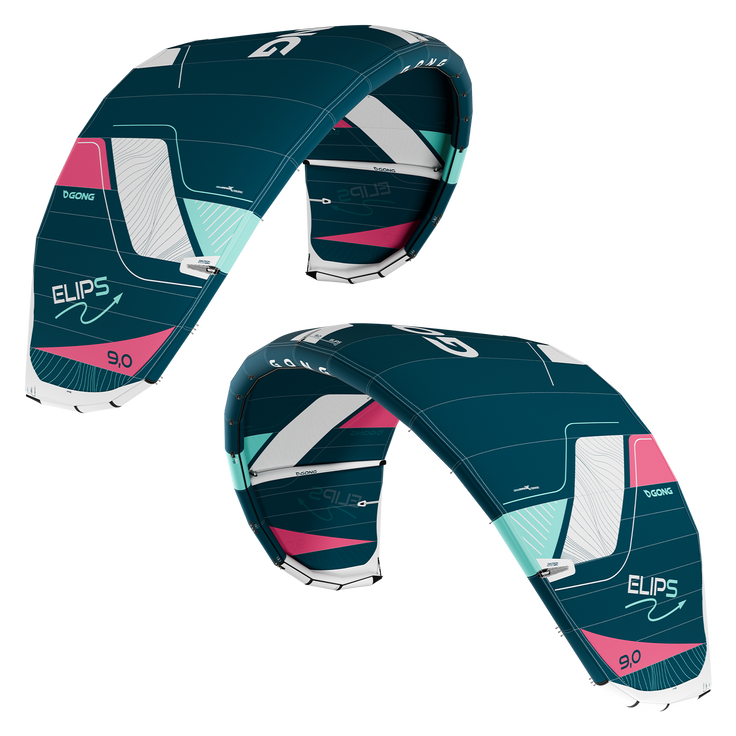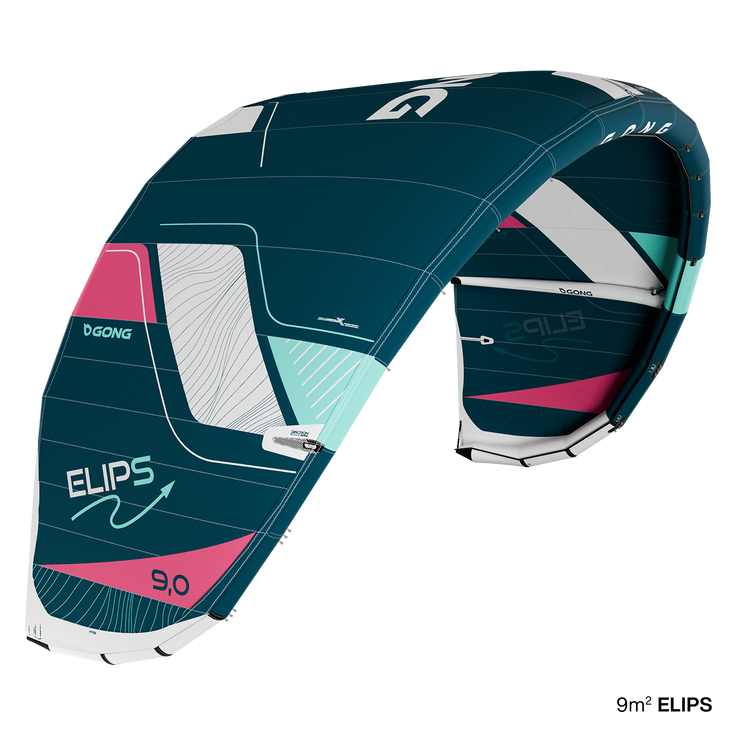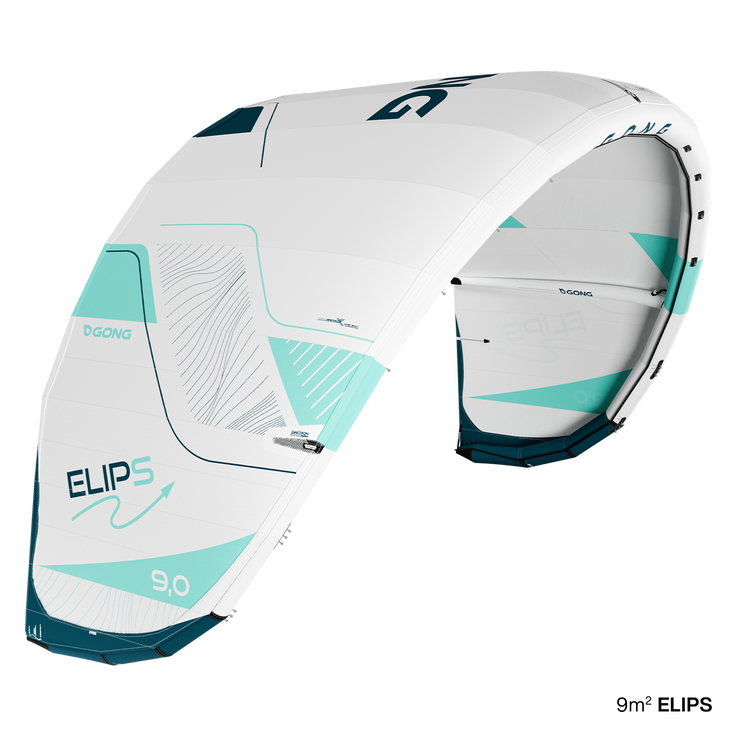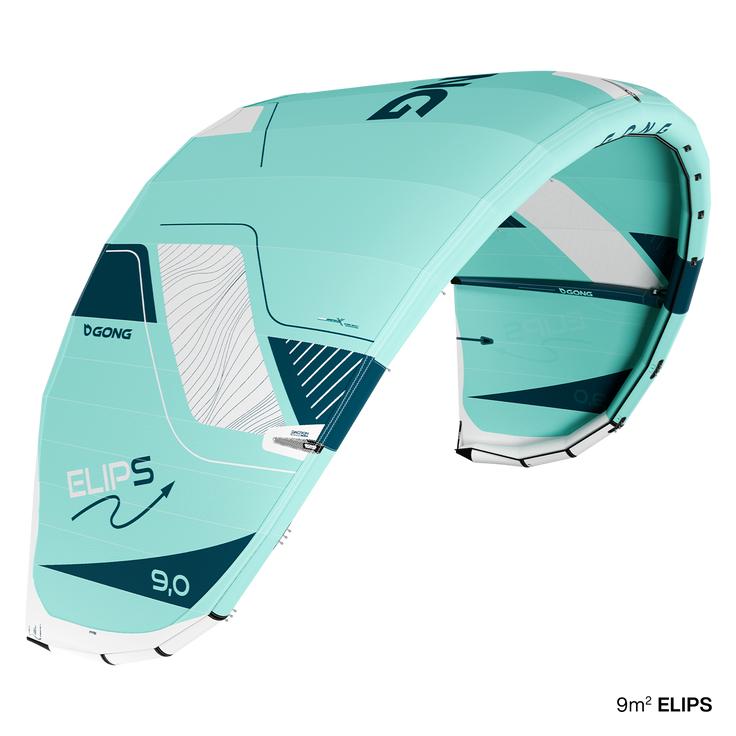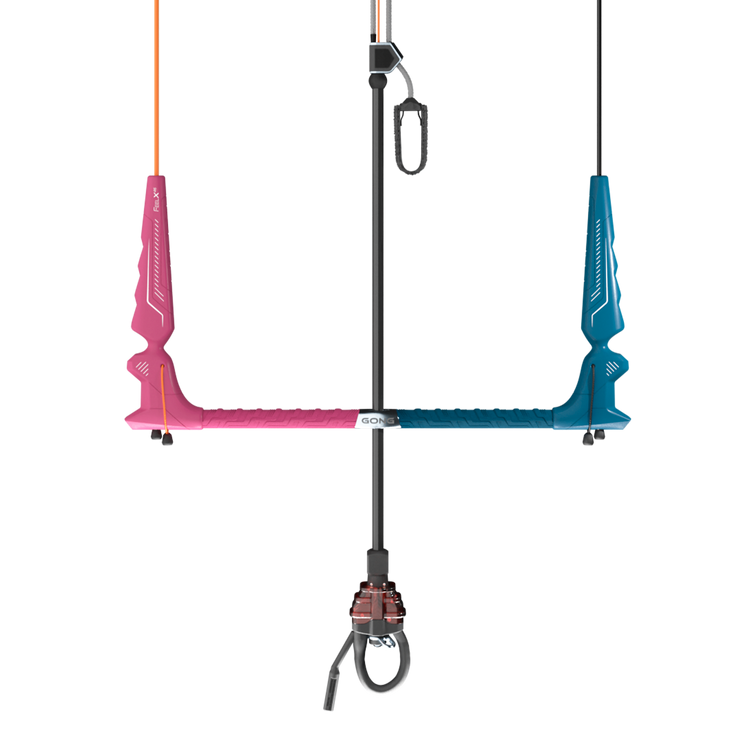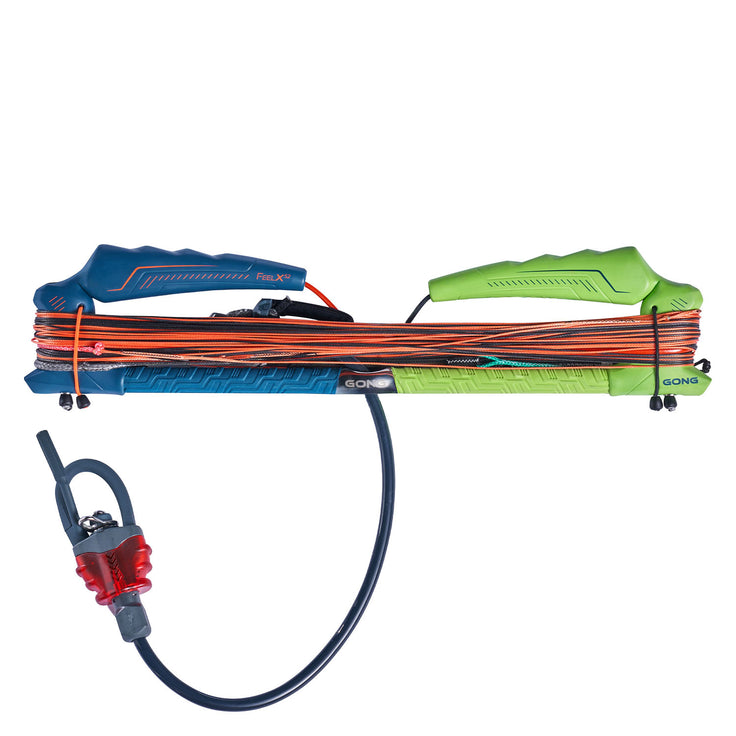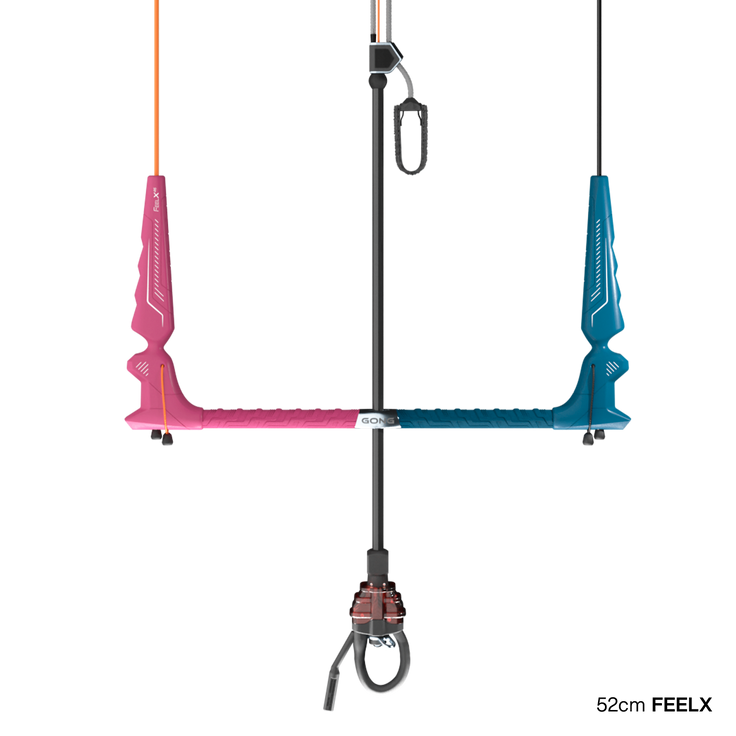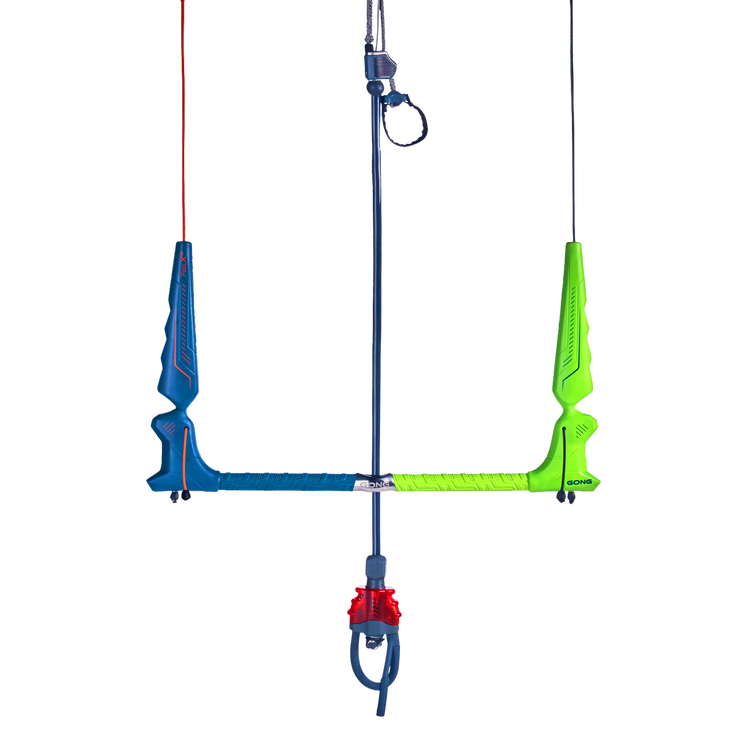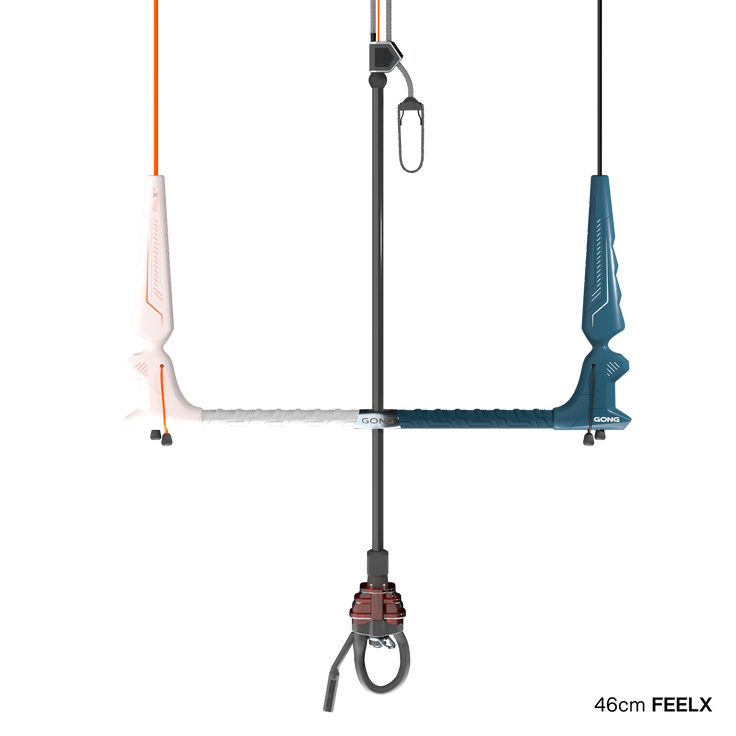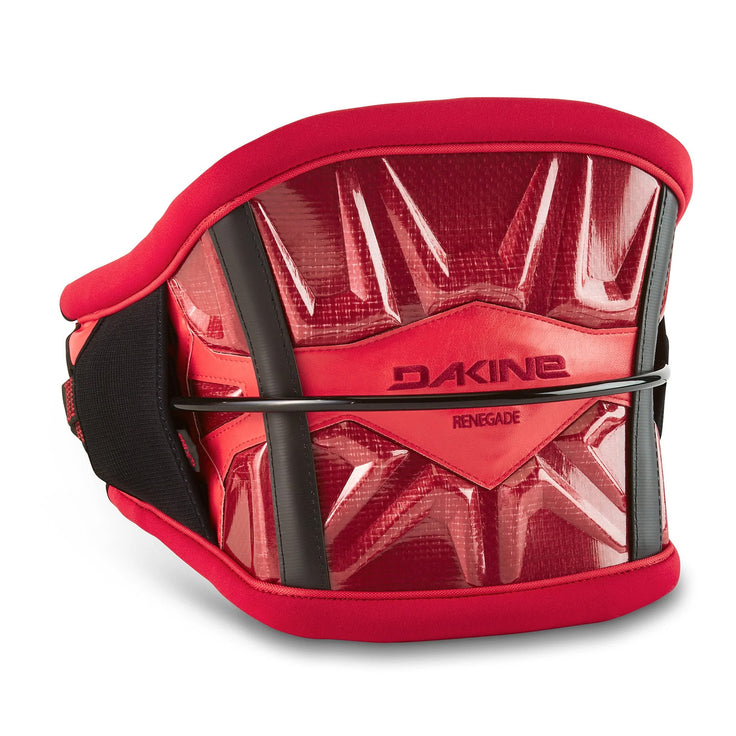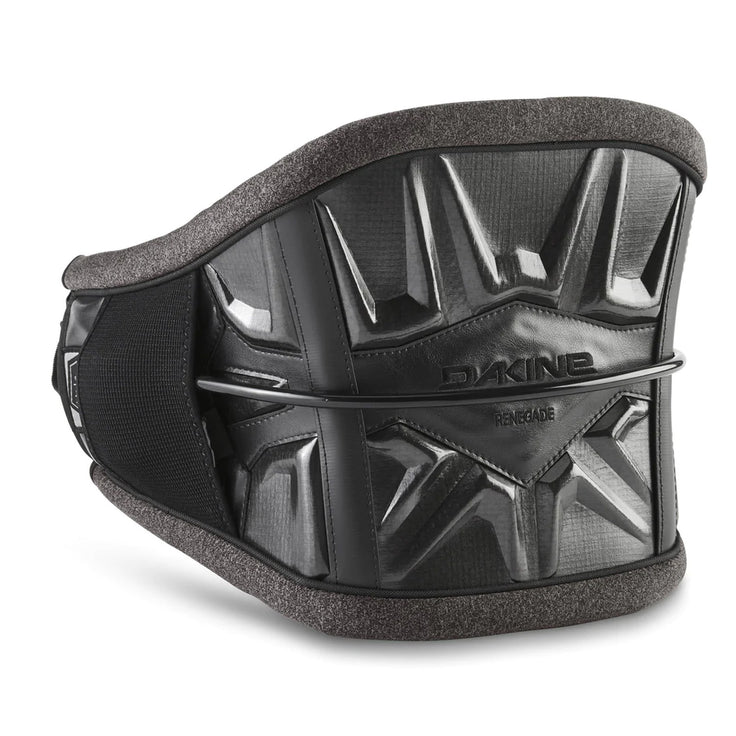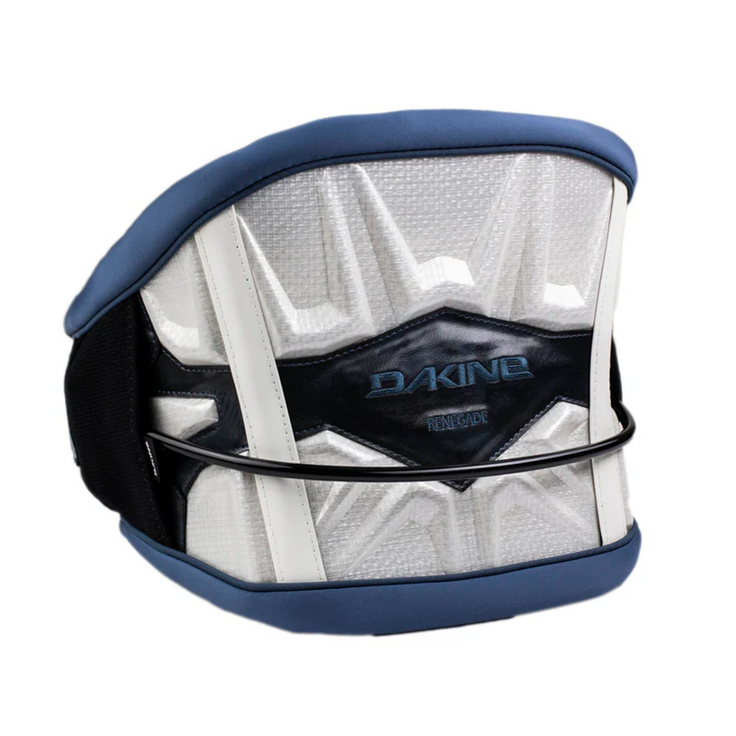FEEDBACK: ELIPS ARAMID DP
- News
- Kite
A session with the Elips Aramid DP reported by David who had the opportunity to test a 5m in surprisingly suitable conditions!

Kitesurfer: Francesco, GONG team rider, with the Elips Aramid DP, Pie FSP 2X and FeelX bar.
On the beach
“I was lucky enough to test a 5m Elips Aramid DP after having already tested the classic dacron version two weeks ago. The striking thing at first is the woven construction of the UPE Aramid on the leading edge and struts which inspires rigidity and durability. Without excessively inflating the kite, the structure is already super rigid as is the case with an UPEA wing. This made my curiosity double because I really like the feeling of the Aramid wings. Obviously, the big question mark is the double skin. It looks neat on the beach… Note that it is less easy to grab the leading edge with your hand because you cannot fully wrap your hand around it. General quality looks great and there is a Velcro flap to pass your hand through and attach the pump.”
Low end to the test
“I had big doubts before hitting the water because the wind was barely reaching 20 knots and blowing side-on. The spot was packed. Surfers had kites between 7 and 9m, twintips between 9 and 13m. But I only had the 5m DP because I was sure to have seen 25 knots on the forecast 😅 So no choice, I had to go with what I had. With the idea of sailing only 10 minutes to test the ultra low end (and switch to my personal kites later on). I set the kite to Turn ++ on the backlines, as I have done with all my kites for the past 20 years, and I centered the front lines. So time to get in the water! Given the low wind I had to work the kite like crazy, but I got going pretty well. I had to make the kite go up and down the window constantly because there was clearly no more than 20 knots. Which brings me to my two first observations. First, the accelerations of the kite are quite spectacular, which helped me generate wind speed and ultimately sailing “comfort” in this rather light wind. Secondly, the kite flies upwind. So after my first tack, despite having had to battle with the low wind, I am actually (slightly) upwind of my starting point. I then confidently sailed back to the shore for my first wave ride.”
Speed and responsiveness
“The waves were really crap, choppy, no hollow sections and a meter high only in the best of sets. In short, wind waves more than swell. But you could see some lines through the chop and link several turns together. So I went for it. The kite was turning great, as a 5m does obviously. The striking part is once again this insane glide of the kite which makes it accelerate after its first quarter turn. Speed and responsiveness you want in a wave kite are clearly there. I am learning to master it as the session goes by. Its strong point is clearly this glide, its accelerations helped me enormously in these fairly light conditions at the start of the session. So I concentrated on making it work in the most powerful section of the window. It’s pretty crazy to be able to benefit from the responsiveness of a 5m in these light conditions. The only downside is that when the kite is no longer moving, you’re back with a “classic” 5m in hand (whereas the wind was rather requiring a 7m). To take advantage of it you have to use its strength, which is speed, and make it work for you.”
Its general behavior
“So as it turned out, I was actually pretty lucky to have been forced to use this 5m in such a light wind (relative to the kite size I mean). This made for a legit low end test. The accelerations of the double profile was a groundbreaking performance I hadn’t seen in a kite for a while. And my luck continued with a wind that increased to 25 knots (a wind in which I am generally on a 6m, or even a 5m). Obviously, I didn’t have to work the kite as much. I was in a comfortable wind range where a few accelerations through the window were enough to get me to speed and lock the kite in the window. This wind increase allowed me to better observe its general behavior. To be honest I feared some weird behavior from the double profile. Well, nothing to report. Kite behavior is as sound as the dacron version. You only have to manage the speed in the window. But speed is everything I want so I’m fine with that. It can exit the powerzone of the window more easily than a classic kite so you have to steer accordingly. But it’s also what helps you to fly upwind. Concerning the stability of the kite, it seems to be much less sensitive to wind irregularities. The behavior is constant. You can really take advantage of this glide to cross both the window and the lulls with speed.”
A disruptive kite
“In short, if I dare say short as I’m already rambling for one page 😅. It's difficult to keep things short when you're testing a truly disruptive kite. I am totally won over by its low end. The guy who landed my kite was in disbelief when he saw that I was riding a 5m (he said he had just enough with 9m/surf). I should point out that I am generally a size or two below the other kiters despite my 85kg (I want fast kites for surfing, period ;)). I can't wait to test the high end because I have a lot of questions about which quiver of Elips Aramid DP kites would suit me. I am usually going for a 8-6-4 quiver to kite from 20 knots to 35+ (and foiling under 20 knots). with the Aramid DP I would almost dare to go for a 6-4 quiver, or even only a 5m 🙃 but that’s probably pushing it too far... Or not. Someone who is usually kiting with 10-7 sizes can certainly go for 9-6. Personally, I need to test the high end ++ to answer this question but its general behavior is promising. I would also like to test it with footstraps as the jumps with the Ayto Aramid DP look crazy. Thanks GONG for the test!”
-30%
Great Deals
heart
heart-full
heart
heart-full
Elips Aramid DP Pro Team Series Kite
Ultra-versatile Aramid kite and ideal for surfing.
Regular Price
699€
Sale Price
699€Regular Price
999€
-15%
Great Deals
heart
heart-full
heart
heart-full
Kite Elips
The perfect kite for surfing.
Regular Price
379€
Sale Price
379€Regular Price
449€
heart
heart-full
heart
heart-full
Kite Bar FeelX
The technical and intuitive kite bar. Available in 4 sizes: 46cm, 52cm, 57cm ...
Regular Price
349€
Sale Price
349€Regular Price
heart
heart-full
heart
heart-full
Dakine
Kite / Wing Renegade Harness
The Renegade waist harness developed by Dakine offers the perfect combination...
Regular Price
229,95€
Sale Price
229,95€Regular Price
